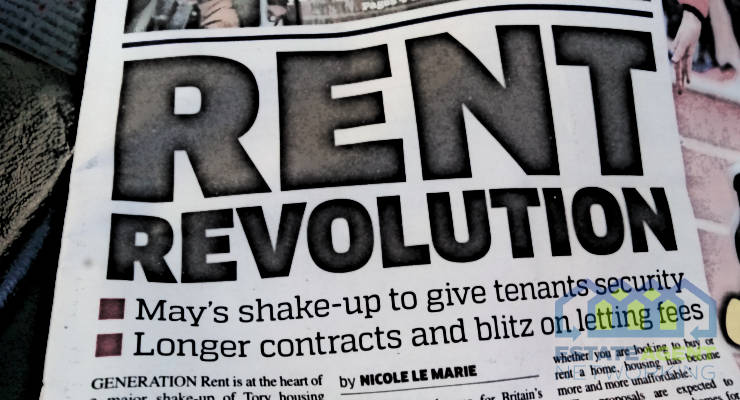Property buyers in the UK could receive an average £25,000 discount on asking prices
A recent study reveals that 31 percent of all properties in the UK have had their initial asking price reduced since first entering the market. Stockton on Tees tops the list with 49 percent of properties experiencing price reductions, followed by the North East oil capital, Aberdeen, with 46 percent of property prices cut. Of the top 20 towns and cities on the report, 17 were located in North England and Scotland, whereas only three from South England made the top 20. London was not gracing the top of this list, with 30 percent of property prices reduced since first listing.
Why are prices being cut?
Property prices could be reduced for a number of reasons, with the most obvious being a surplus of sellers and low demand from buyers. However, the balance is quite the opposite on the property market in the UK at the moment.
The price cuts are mostly from years of overpricing by agents who include house price increase rates in the initial property valuation, and therefore when these rates slow down or even decline, which has been experienced over the last 12 months following the EU referendum result, sellers need to cut their prices in order to sell. In addition to this, Brexit has led to uncertainty across the nation and buyers are more inclined to negotiate a lower price in the current economic climate.
According to Zoopla, the average discount purchasers are experiencing around Britain is in the region of £25,000, which equates to about an 8 percent reduction. In London, property buyers can expect average reductions as high as £57,323, which is a 7.52 percent discount on London property values.
How multiple agency instructions and online agents have affected mispricing
Mayfair, one of the most prestigious neighbourhoods in London, has seen the number of properties removed from the market overtake the number of sales, so far this year. With only 26 sales, at a value of about £83 million, disappointed sellers are withdrawing their homes from the market as they struggle to find a buyer, with 30 removed so far, totalling £114 million in asking prices.
The reasoning follows a similar pattern to that across the country, where agents are quoting high prices either through lack of knowledge of the local market or in the hopes that the price would reduce in the months following securing the client. However, the key driver is the increase in multiple agency instructions and competition between traditional estate agents and online estate agents.
It was typical for a buyer in Prime Central London to appoint a single estate agent to value, market, and sell their property when selling 20 years ago. This agent would likely be experienced in the local market and price the property based on their knowledge of the local market, comparable sales in the area, other properties on the market of the same specifications, and attitude and demand of potential buyers in the area.
The last decade has seen an accelerated increase in buyers using multiple agents, and therefore the agent selling the property may not be the agent who priced it. It has also been a time where property search websites and online estate agents have emerged at full force, leading property vendors to gain advice from agents inexperienced in the local property market, who inflate property prices and promise unrealistic sales values in order to compete for new business.
This change in working methods is evident in Mayfair property sales in 2016, where 45 percent were multiple agency instructions, which match the exact 45 percent of properties which were initially mispriced last year.
Peter Wetherell, CEO of leading real estate agent Wetherell, said “Mispricing is deeply unhealthy and extremely bad for the good reputation of estate agency professionals who are experts in their local marketplaces. Mispricing leads to slower sales; price reductions and reduced vendor and purchaser confidence, and can all have been avoided.”
Over £1.1 billion worth of homes mispriced in prime central london over the last decade
70 percent of Mayfair residential property has been mispriced, resulting in over £1.1 billion worth of homes marketed for the incorrect amount; with an average value of £4.6 million per unit. These high prices have led to slow sales, decreased confidence in both buyers and sellers, and price reductions; all of which could have been avoided.
Upon analysing LonRes sales data and local market intelligence, it was discovered that of the 1,047 residential sales between 2007 and 2016 in Mayfair, 245 were initially overpriced and had to be reduced in order to sell. Annual sales across the decade reveal that a correctly priced property in Mayfair will usually sell in around 3-6 months, where an incorrectly priced property can take about 14 months to sell, including a price reduction. At the other end of the scale, properties which are undervalued are rare in Mayfair but can be expected to sell in just 1-2 weeks when it does happen.

In March 2017, there were 160 residential properties for sale in Mayfair, with an average ten months on the market, leading to the conclusion that only 25 percent of properties are currently priced correctly, while 70 percent are overpriced and 5 percent are underpriced.
Robert Windsor, Development & Sales Director at Wetherell, says “It speaks volumes to us that 80% of the sales in Mayfair over 2015 and 2016 were handled by just two estate agents – Wetherell as the leading specialist boutique agent for Mayfair plus a leading corporate agent. Our local offices have highly experienced senior teams and a deep knowledge of the Mayfair marketplace. When we are instructed on a sole agency basis, or with another on a joint agency, the property is consistently priced correctly, marketed professionally and sold successfully.”
“However, so many times over the last five years, we have taken on properties which have previously been instructed with other agents or multiple agencies who have a far less knowledge of Mayfair or have slipped into a valuation “price war” in order to please the vendor and win the instruction, and the result has been mispricing and no sale. Eventually, these instructions have come back to us to resolve. It is interesting to see reports from portals of increasing price reductions – this does not mean that values have come down; merely that the properties have eventually reached their correct marketing price and are in line with local comparables.”
Mayfair has surpassed the rest of Prime Central London in property performance since 2007, with growth at almost 90 percent, compared to 70 percent across the rest of PCL. Wetherell predicts Mayfair will continue to outperform the rest of Prime Central London as new residential developments are welcomed into the market over the next five years. These developments are also expected to secure the revival of Mayfair as London’s number one residential neighbourhood.

Peter Wetherell, Mayfair Guru, says “Don’t wait to buy in Mayfair. Just buy in Mayfair and wait – because the best is yet to come”.









